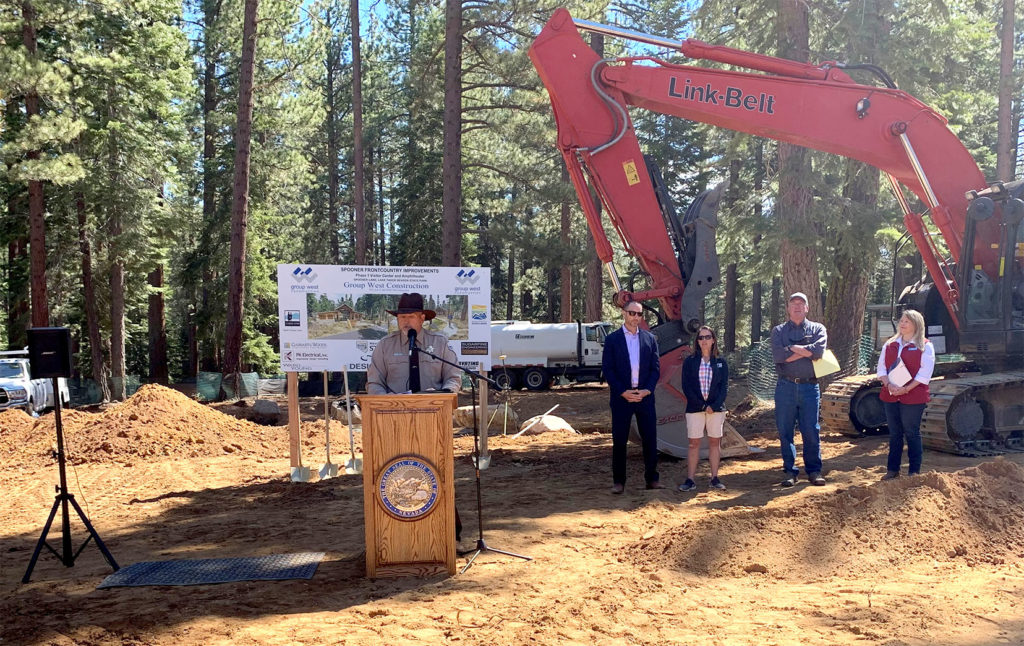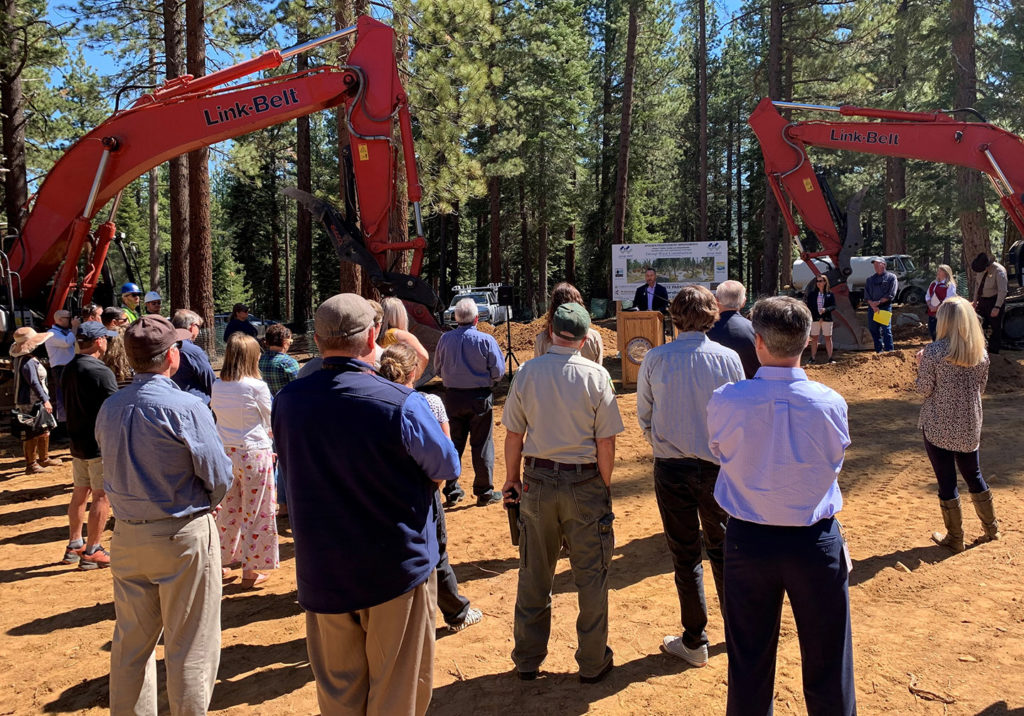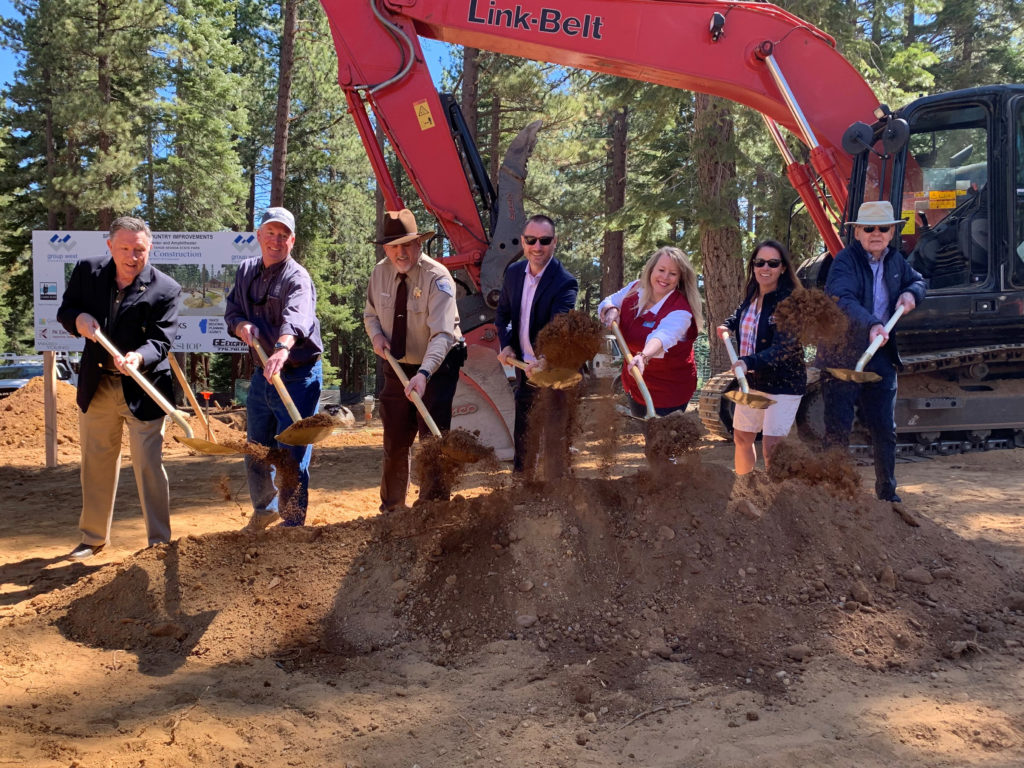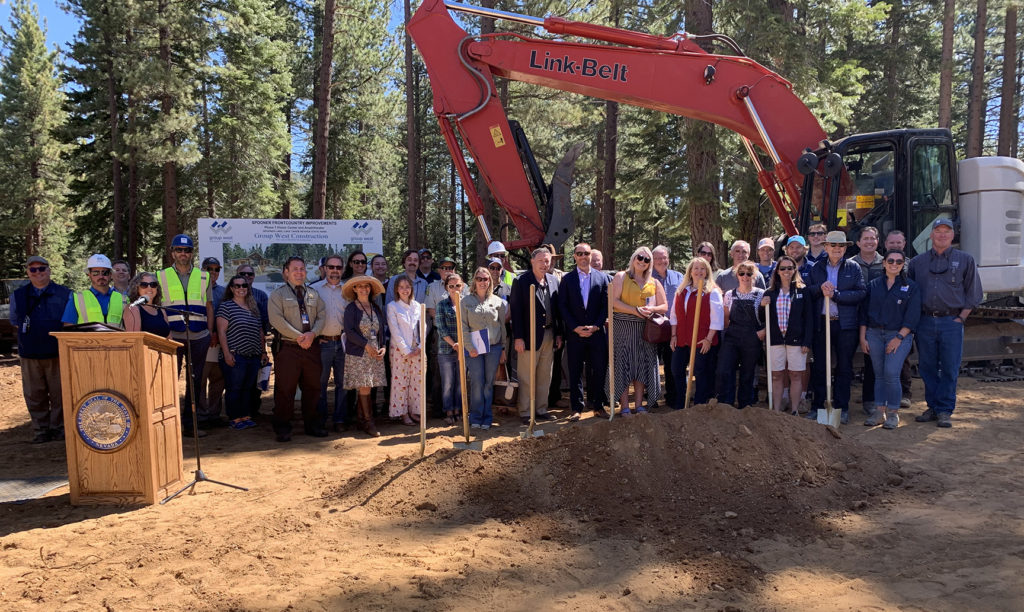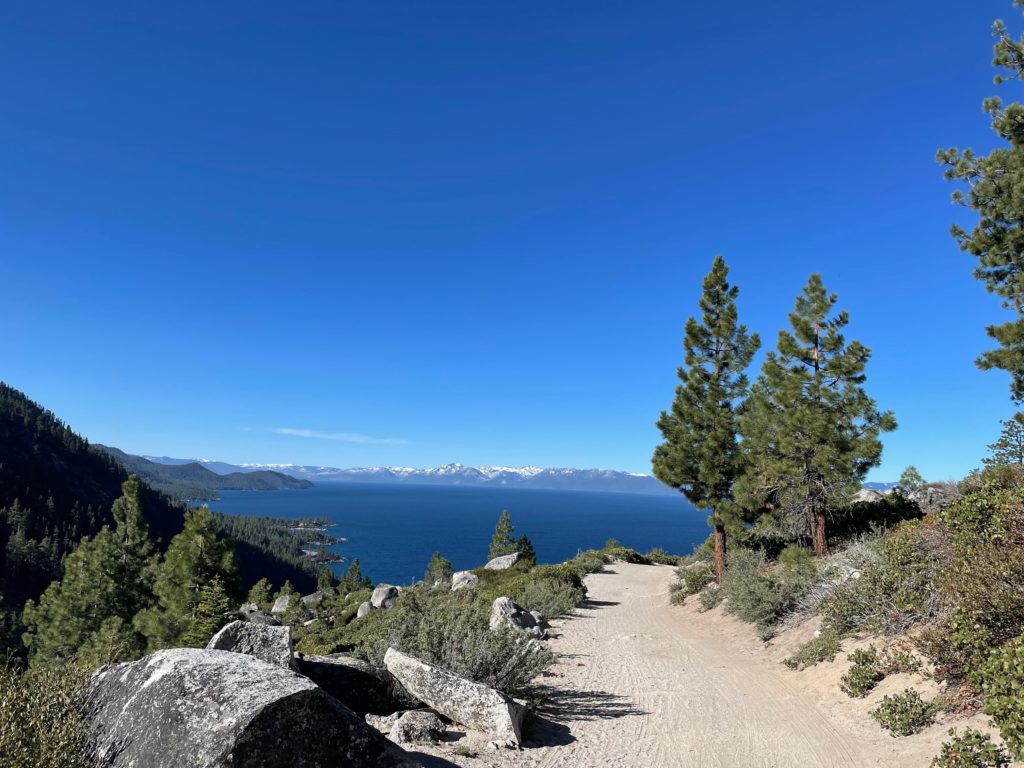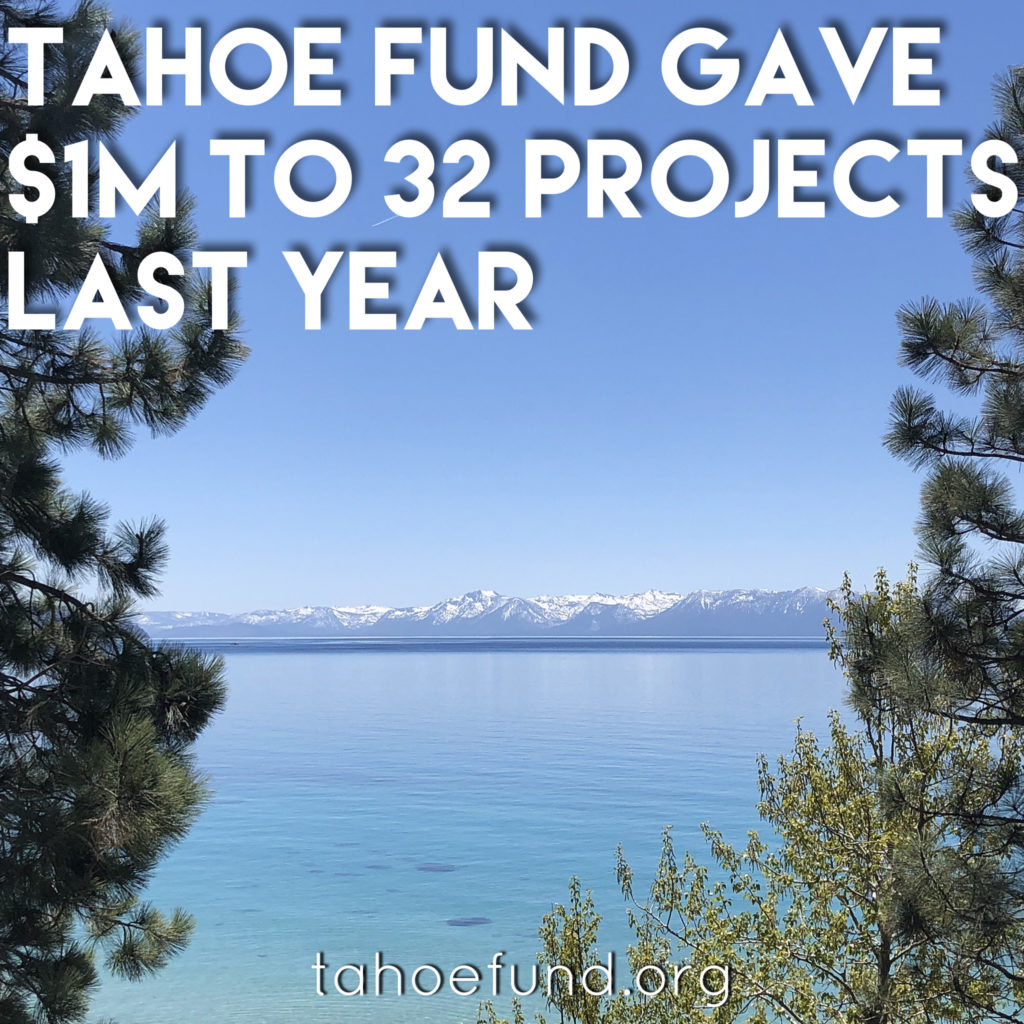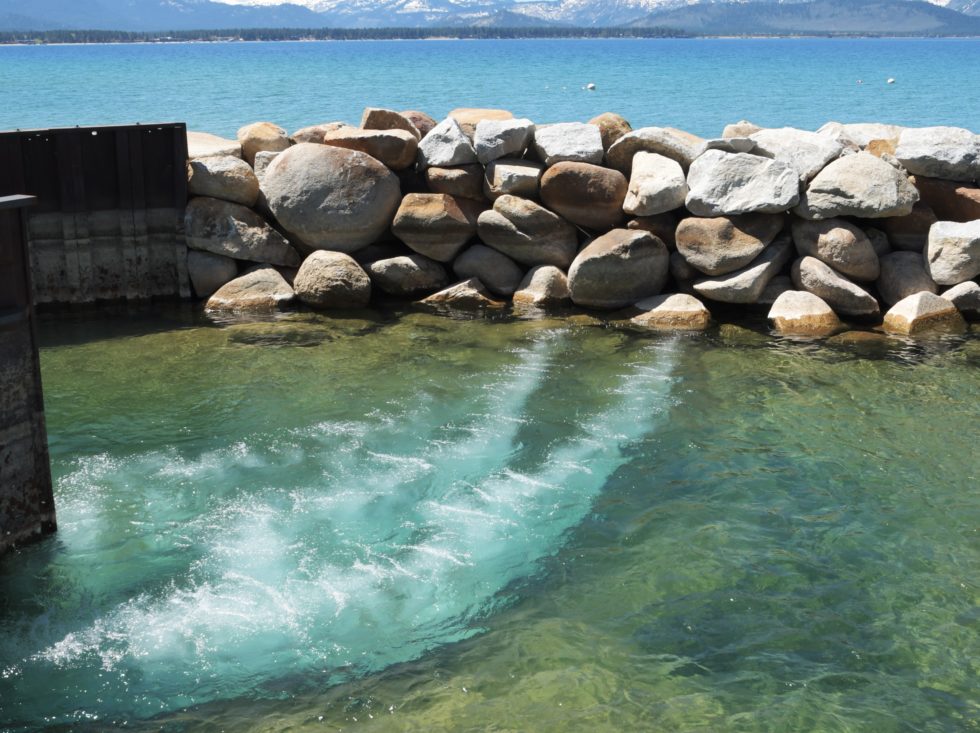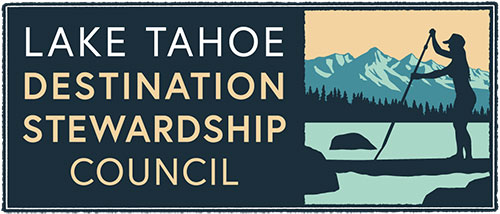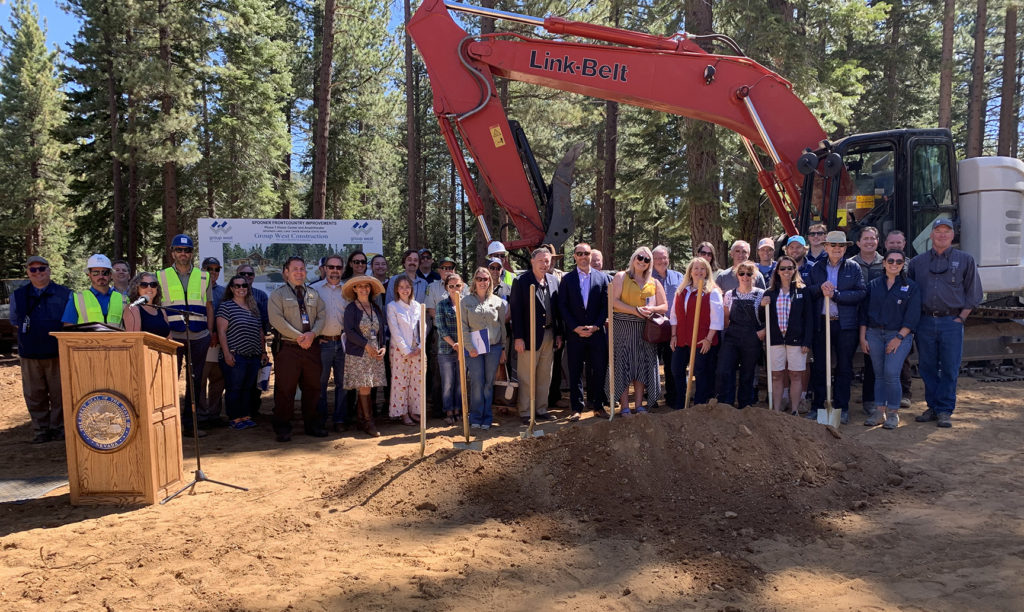
Incline Village, Nev. (May 15, 2021) – With construction underway on Spooner Lake’s future Visitor Center and Amphitheater, local officials, private donors, and stakeholders gathered at the site to celebrate the highly anticipated improvement project with an official groundbreaking ceremony.
The Spooner Lake and Backcountry Management Area of Lake Tahoe Nevada State Park (LTNSP) offers diverse and highly sought-after recreational opportunities for both local residents and visitors from around the world. Established in 1981, Spooner Lake is one of Nevada’s most prized recreational resources within Nevada’s system of State Parks. The park is a popular four-season destination for hikers, mountain bikers, anglers, equestrian users, snowshoers and cross-country skiers, and a wide variety of nature lovers.
In 2018, Nevada State Parks teamed up with partners from the Nevada Division of State Lands, the Nevada Tahoe Resource Team, the Washoe Tribe and the Tahoe Fund to reimagine Spooner Lake. With more than 150,000 visitors a year, 60 miles of trails and 13,000 acres of wilderness to explore, the goal was to create a trailhead facility that matched the splendor of Spooner’s beautiful backcountry. The one-of-a-kind facilities at Spooner Lake will provide a magical environmental education venue for people of all ages.
The new visitor center and amphitheater will serve as the heart of Spooner’s natural and cultural history programs and ranger-led hikes and tours, as well as provide an immersive environmental education and science venue for students. The project will also serve as a major portal to the expansive and spectacular non-motorized primitive wilderness within the Lake Tahoe Basin.
Nevada Governor Steve Sisolak expressed his support of the Spooner Lake Park improvement projects: “Breaking ground on the new Spooner Lake and Backcountry Visitor Center and Amphitheater is a historic milestone reflecting Nevada’s celebrated outdoor heritage, and will provide all Nevadans, families and visitors with accessible, affordable, and sustainable outdoor recreation opportunities for generations to come. In addition to providing new opportunities for the public to connect with nature and explore the beautiful backcountry around Spooner Lake, these projects will solidify the entire east shore of Lake Tahoe as a world-class recreation destination. As recreation demand continues to rapidly grow, programs that focus on environmental education and stewardship are key to providing a quality recreation experience and strengthening Nevada’s economy, while protecting our precious natural and cultural resources simultaneously. I thank all of the public and private partners for working together to make this project a reality. This public-private collaboration is the perfect example of how we can come together to make remarkable things happen.”
“We are so thankful to the Tahoe Fund donors who generously provided $300,000 in private funding to help secure the public funds necessary to make this dream project happen,” said Tahoe Fund CEO Amy Berry. “Congratulations to Nevada State Parks and all the partners for breaking ground on these much needed improvements that will support the users and the natural environment.”
This project is part of the Lake Tahoe Environmental Improvement Program and is a public-private collaboration between the Nevada Division of State Parks, the Nevada Division of State Lands, the Nevada Tahoe Resource Team, the Washoe Tribe, and the Tahoe Fund. It is made possible by public bond funds, the Land and Water Conservation Fund, the Nevada Lake Tahoe License Plate Program, as well as the generous donations made through the Tahoe Fund by individuals and foundations who want to help ensure a sustainable Lake Tahoe for future generations.
